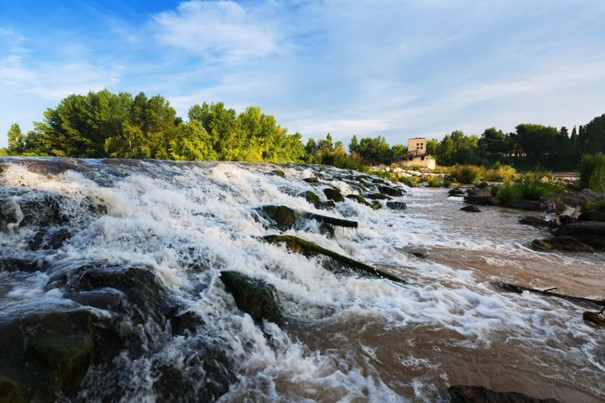Hydroelectric Power Plants
RENEWABLE & ALTERNATIVE
ENERGY SOURCES
Introduction
The biggest hydroelectric power plants can generate more than 100 TWh electricity yearly, but the smaller ones are also capable to produce hundreds of GWh electricity and can supply clean energy for a whole city. Beyond run-of-river power plants, which channel flowing water from a river through a canal or penstock to spin a turbine, we also find reservoir-dam power plants as well as wave and tidal power plants.
Description
Hydroelectric power plants are built nearby bigger rivers, streams, lakes, high sea level artificial water reservoirs and on sites ideal for dams. Due to the traditional use of water’s kinetic energy, hydroelectric-technologies are deemed as a renewable solution.
Similar to micro-hydro power systems, power plants produce electricity from the kinetic energy of flowing water with a turbine which is connected to a generator.
Among the advantages of hydroelectric plants, we can mention the very low maintenance cost or CO2 emission reduction. The time and performance of electricity generation can be set and change quickly by dams, and hydroelectric power can supply electricity continuously. In contrast, the investment costs can be extremely high, and it is not easy to find appropriate site for a hydroelectric plant. During the hydroelectric project, natural and residential areas can be flooded and damaged. Suitable sites are often situated among the mountains, far from the city and losses due to energy transport can occur. A large amount of alluvial is deposited in the reservoirs, which must be removed constantly, but it has direct effect on the ecosystem.
The EU supports innovation activities to reduce the environmental impact of such power plants, increase the sustainability and efficiency of hydro power also focusing on efficient retrofitting of the existing older plants.


